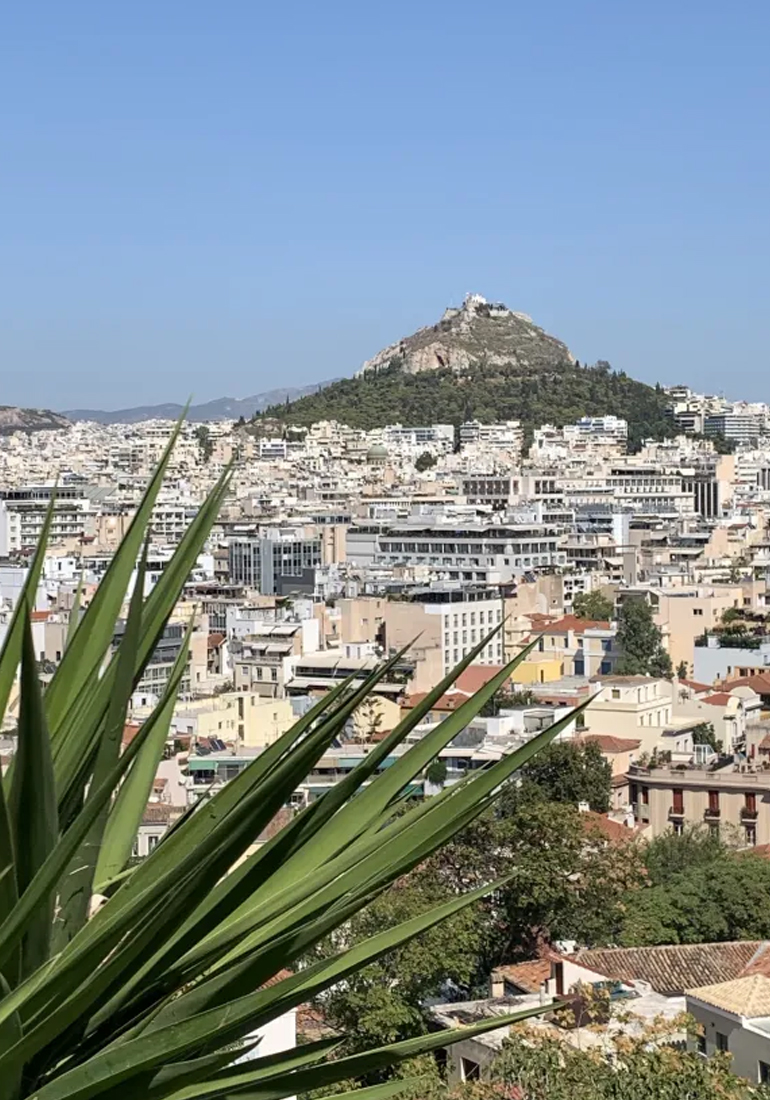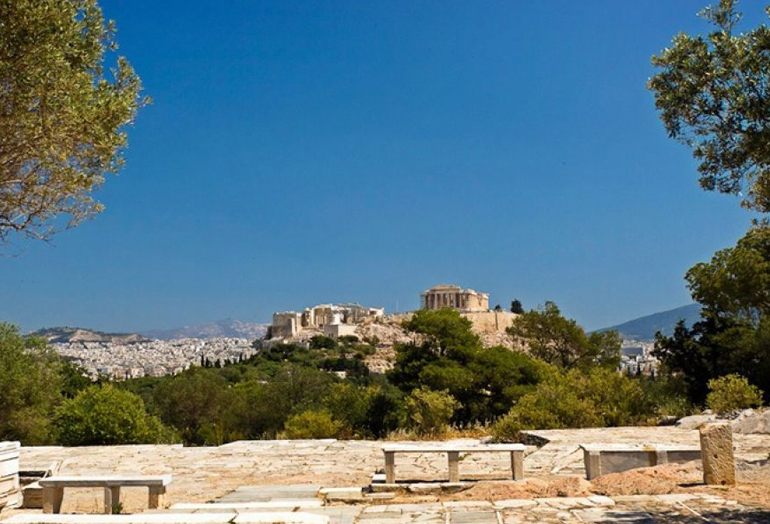Filopappou Hill or Mouson Hill or Seggio Hill is a hill in Athens located opposite, southwest, from the Acropolis.
It is connected to the adjacent hills of Asteroskopeio (hill of Nymphs) and Pnyka. At its top, there is the monument of Philopappos
which was erected by Philopappos - a prince of the Kingdom of Commagene in the Roman Empire during the 1st century and 2nd century - who gave his name to the hill.
On the south side of the hill there is also the Dora Stratou theater. The oldest name "Segio hill" dates back to the time of the Frankish occupation and was preserved until
the beginning of the last century.
The sunset on Philopappos Hill is a truly breathtaking experience. As the sun sets over Athens, the hill is bathed in a warm, golden light that creates a magical atmosphere.
From the top of the mountain, you can have a panoramic view of the city and its surroundings, including iconic landmarks such as the Acropolis and the Parthenon.
The view of the city at sunset is a popular destination for tourists and locals alike, as it provides a unique perspective on Athens and its rich cultural heritage.
Whether you're a history buff, a nature lover, or simply someone looking to relax and take in the city's beauty, the sunset on Philopappos Hill is not to be missed.






